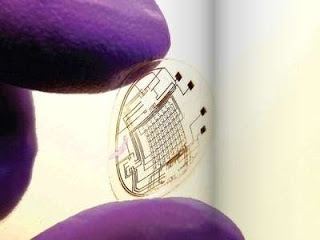Play this before reading




The
Olympic committee has begun to apparently consider a policy of disallowing
athletes who are not able bodied to compete in the regular Olympic games. Arguments
have been volleyed from the Olympic stadium to the halls of discussion about
Pistorius’ fitness to compete; not because he cannot compete on an even level
with the able bodied runners, but because he competes at a higher level than
they can. The issue is that his prosthetic limbs are lighter than the lower leg
of an able bodied runner, and give him a marked advantage in the speed that he can
run because of this. Thus far, this is being considered as a policy issue to
ensure that the athletes don’t hit a point where the newest and greatest method
of performance enhancement is to have limbs purposely replaced with bionic
enhancements. This implies that those limbs or enhancements would put them on a
level that an un-augmented human could not match, and creates a distinction
that frankly comes down to whether or not the person in question is in fact
fully human anymore.
We
cannot allow something like that to happen. People will always attempt to
better themselves, and to enhance their performance in any area – drugs,
exercises, diets, and bionic enhancements or replacements, necessary or not are
frankly the next step in the cycle. Its by no means surprising that people
would do something of that nature, either to attempt to improve themselves for
their sport, or simply because they think its cool. An attempt to define what “humanity”
entails is something that can only lead to problems down the road, and not only
in a science fiction sense. It would likely lead to some sort of division
between human and enhanced, cyborg, or whatever name would appear to evoke the
same intent, which would lead to friction and legal difficulties, and
eventually, knowing human nature, open revolt from one side and eventual war. Remember
the proof of it that’s happened in the history of not just the US, but the
entire world – slaves were thought of as less than human in several cultures;
the US worst of all. And eventually, that definition of someone as less than
human led to revolt and open rebellion, followed by civil war as people came
down on different sides of the issue.
The
problem is, there’s already something of a divide between the able bodied and
the disabled – much of the time, there is a huge difference in treatment between
disabled people and able bodied, not just in the Olympics, but in society,
hospitality, and even insurance. The necessity of having handicap accessible
restrooms and entrances is one thing. That ensures that we all are on the same
level, and keeps everyone that way. But the definition of disability is one
that, especially in the legal definition in the US, doesn’t necessarily apply
to some people with prosthetic replacements – Oscar Pistorius, for example, by
the Americans with Disabilities Act, would essentially be considered able
bodied. If this divide becomes one that enters law and national policy, they we
could be looking at a new classification of “able bodied”, as enhanced becomes
an option. If there becomes a new class, someone is going to take that as proof
that they are above or below the rest of us with “natural” bodies, likely on
both sides. What we all need to remember is that whatever parts may be missing
or may have been added, we are all humans. Its not a matter of altered, able
bodied, enabled or disabled. We all need to remember that whatever changes may
come, people are people. We cannot throw that humanity away, or assume that it
has been thrown away by others to fit them into our view of things. Consider
the number of scandals that have come to light of Olympic athletes on
performance enhancing substances or methods – they’re still considered human,
even though some of what they’ve done to themselves may cause more permanent
changes than the removal of a limb would, especially with a bionic replacement
or enhancement. If they’re still human after all that, then a man whose legs
have been replaced with plastic must be as well.







No comments:
Post a Comment